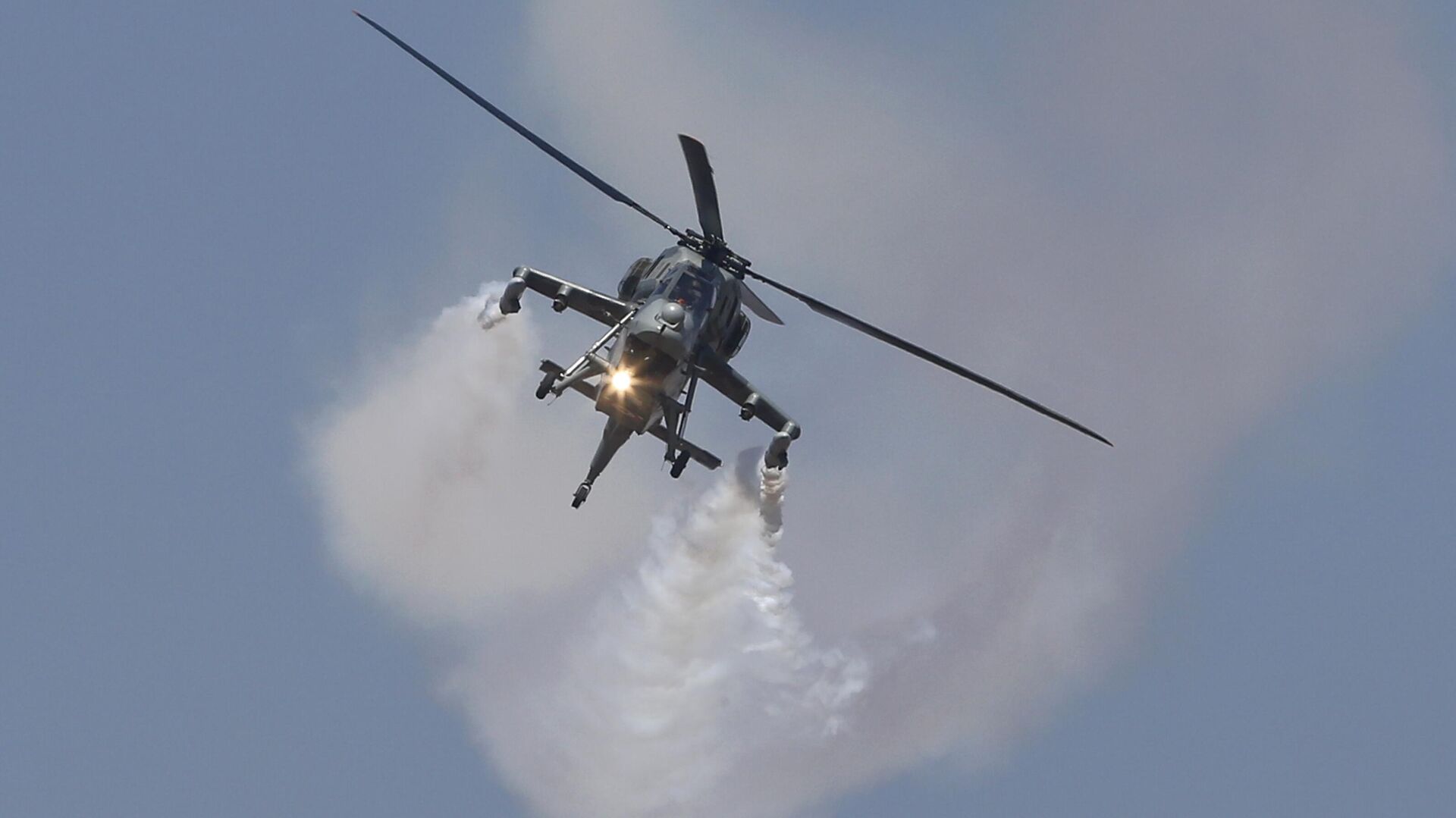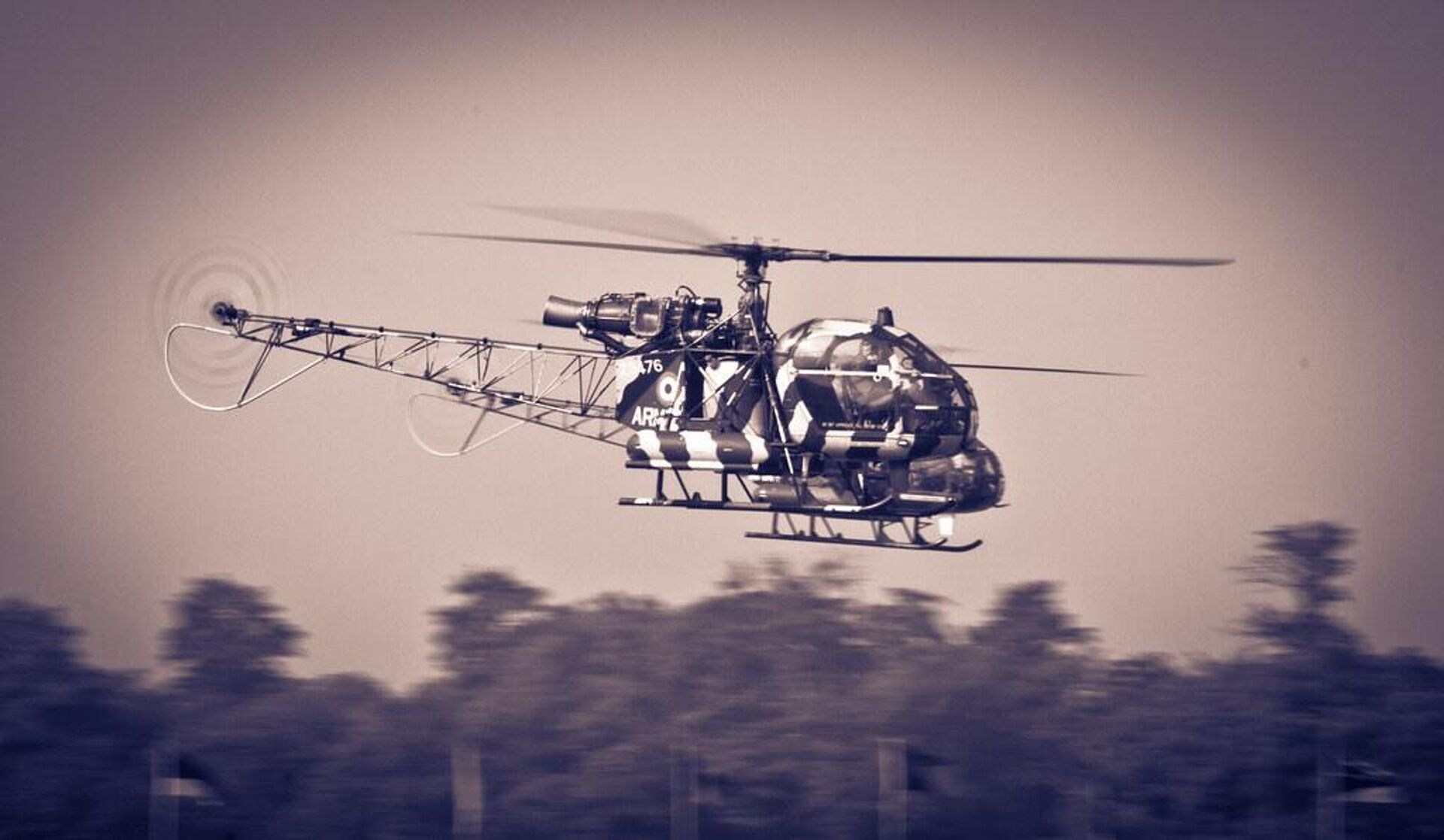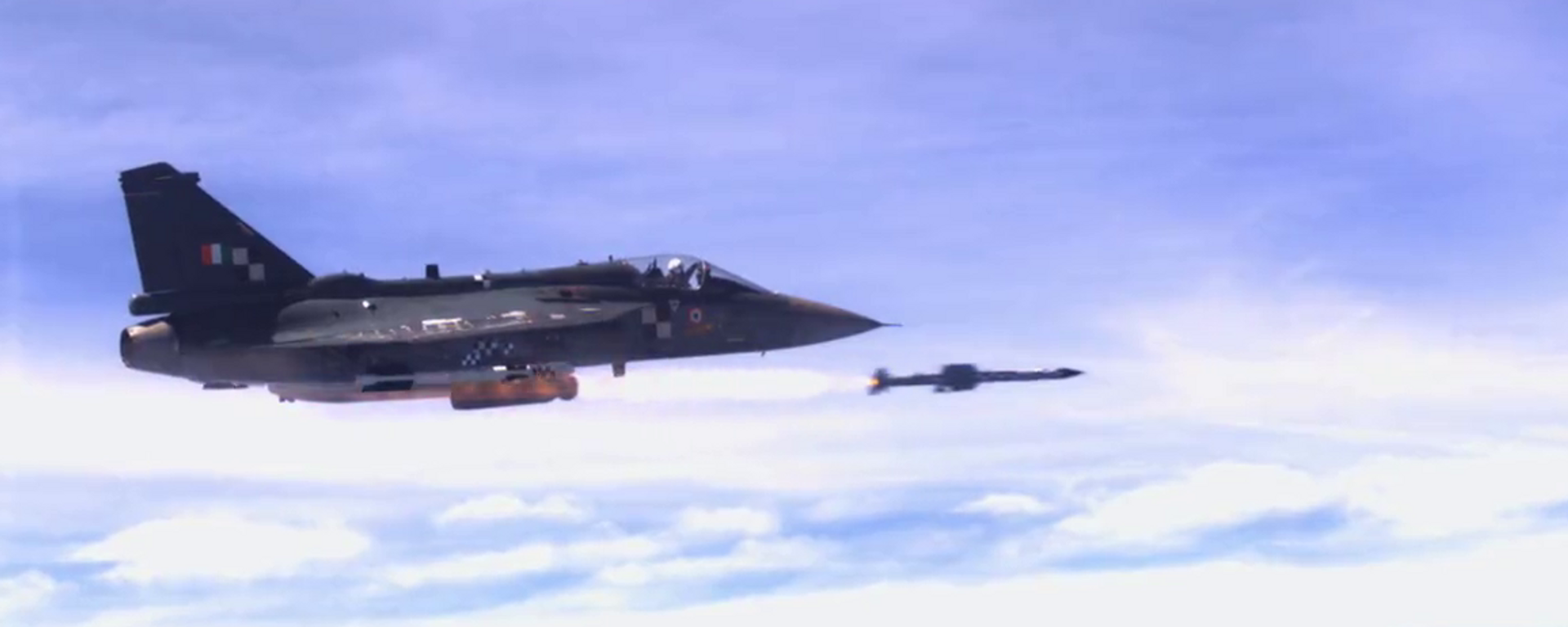https://sputniknews.in/20231028/advanced-light-helicopter-dhruv-to-replace-cheetah-and-chetak-expert-5109981.html
Dhruv Advanced Light Helicopter will Replace Cheetah and Chetak: Expert
Dhruv Advanced Light Helicopter will Replace Cheetah and Chetak: Expert
Sputnik India
As the contentious fleet of Cheetah and Chetak helicopters is expected to be phased out in 2027, India is set to replace them with the Advanced Light Helicopter (ALH) Dhruv, an air marshal told Sputnik India.
2023-10-28T14:19+0530
2023-10-28T14:19+0530
2023-11-01T12:13+0530
defenсe news
india
france
hindustan aeronautics limited (hal)
indigenous production
indigenization
make in india
dhruv helicopter
ministry of defence (mod)
indian air force (iaf)
https://cdn1.img.sputniknews.in/img/07e7/05/04/1814046_0:127:3188:1920_1920x0_80_0_0_4b1d130dc4ac4afd459b8b0f9ed5a250.jpg
The controversial fleet of obsolete, antiquated, and prone-to-mishaps Cheetah and Chetak helicopters, which were introduced in the late 1960s and early 1970s, is scheduled to be phased out in 2027.Meanwhile, since their introduction in the armed forces in 1976, the Cheetah helicopters — which are identical to Eurocopter's LAMA SA 315B — have been in use. Through technology transfer agreements with foreign firms, the state-owned Hindustan Aeronautics Limited has been manufacturing these ever since.When the first batch of the historic Cheetah and Chetak helicopters reach the end of their Total Technical Life (TTL) in 2027, the Army will begin to phase them out, while it looks to replace them with a larger number of indigenous light utility helicopters (LUH), Indian Media reported.Difference Between Cheetah and Chetak HelicoptersThe single-engine light utility Chetak helicopters have a larger fuselage with wheels, whereas Cheetahs are sleeker and feature skis for landing gear, said the air marshal, while describing the differences between the Cheetah and Chetak helicopters.The Chetak is also capable of travelling from place A to B using wheeled taxiways. The Cheetah, on the other hand, lacks taxiing, so to take off, it must move from its location and also needs to have full power.Advanced Light Helicopter Dhruv to Replace Cheetah and ChetakFurthermore, Bedi mentioned that the Hindustan Aeronautics Limited-built ALH Dhruv has superior capabilities, performance, and an engine that can reach 235 to 250 kilometres per hour while carrying six passengers in addition to flying at a height of 6.5 kilometres.Indigenisation Aircraft Wave in IndiaThe ALH Dhruv, manufactured by Hindustan Aeronautics Limited, and the total technical life of the Cheetah and Chetak are scheduled to overlap in 2027, said Bedi.Effect on Defence PersonnelMeanwhile, Bedi claimed that the ALH Dhruv has instrumental meteorological conditions (IMC) capable of performing at a high level of dependability and survival in all-weather situations.
https://sputniknews.in/20230930/africa-keen-on-indian-aircraft-cooperation-with-west-unprofitable-analyst-4497641.html
india
france
Sputnik India
feedback.hindi@sputniknews.com
+74956456601
MIA „Rossiya Segodnya“
2023
Swapna Nair
https://cdn1.img.sputniknews.in/img/07e7/09/12/4320104_0:0:681:681_100x100_80_0_0_ca8a7d4d582609272840ffdd1cde7278.jpg
Swapna Nair
https://cdn1.img.sputniknews.in/img/07e7/09/12/4320104_0:0:681:681_100x100_80_0_0_ca8a7d4d582609272840ffdd1cde7278.jpg
News
en_IN
Sputnik India
feedback.hindi@sputniknews.com
+74956456601
MIA „Rossiya Segodnya“
Sputnik India
feedback.hindi@sputniknews.com
+74956456601
MIA „Rossiya Segodnya“
Swapna Nair
https://cdn1.img.sputniknews.in/img/07e7/09/12/4320104_0:0:681:681_100x100_80_0_0_ca8a7d4d582609272840ffdd1cde7278.jpg
advanced light helicopter (alh) dhruv, cheetah and chetak helicopters, cheetah helicopter, chetak helicopter, dhruv helicopter, hal helicopters, indian helicopters, air marshal, defence news, defense news, hindustan aeronautics limited,
advanced light helicopter (alh) dhruv, cheetah and chetak helicopters, cheetah helicopter, chetak helicopter, dhruv helicopter, hal helicopters, indian helicopters, air marshal, defence news, defense news, hindustan aeronautics limited,
Dhruv Advanced Light Helicopter will Replace Cheetah and Chetak: Expert
14:19 28.10.2023 (Updated: 12:13 01.11.2023) As the contentious fleet of Cheetah and Chetak helicopters is expected to be phased out in 2027, India is set to replace them with the Advanced Light Helicopter (ALH) Dhruv, an air marshal told Sputnik India.
The controversial fleet of obsolete, antiquated, and prone-to-mishaps Cheetah and Chetak helicopters, which were introduced in the late 1960s and early 1970s, is scheduled to be phased out in 2027.
The state-owned airframer Hindustan Aeronautics Limited (HAL) first started manufacturing helicopters in 1962, entering an agreement with Sud-Aviation (now Eurocopter, France) for the production of the Alouette III (Indian name Chetak). The helicopter is widely used by the Indian Armed Forces for both operational and basic training purposes for pilots from all three services.
Meanwhile, since their introduction in the armed forces in 1976, the Cheetah helicopters — which are identical to Eurocopter's LAMA SA 315B — have been in use. Through technology transfer agreements with foreign firms, the state-owned
Hindustan Aeronautics Limited has been manufacturing these ever since.
When the first batch of the historic Cheetah and Chetak helicopters reach the end of their
Total Technical Life (TTL) in 2027, the Army will begin to phase them out, while it looks to replace them with a
larger number of indigenous light utility helicopters (LUH), Indian Media reported.
Difference Between Cheetah and Chetak Helicopters
Amid the replacement of the Cheetah and Chetak helicopters, Air Marshal G.S. Bedi (retd.), distinguished fellow at the Centre for Air Power Studies (CAPS), told Sputnik India, “Prior to their induction, these helicopters were intended to serve as Air Observatory Posts, nevertheless, as weaponry technology advanced, new roles in communication became available - the Cheetah and Chetak were inducted into the Armed Forces”.
The
single-engine light utility Chetak helicopters have a larger fuselage with wheels, whereas Cheetahs are sleeker and feature skis for landing gear, said the air marshal, while describing the differences between the Cheetah and Chetak helicopters.
The Chetak is also capable of travelling from place A to B using wheeled taxiways. The Cheetah, on the other hand, lacks taxiing, so to take off, it must move from its location and also needs to have full power.
Advanced Light Helicopter Dhruv to Replace Cheetah and Chetak
The Indian Armed Forces planned to replace the ageing and outdated Cheetah and Chetak with the Dhruv Advanced Light Helicopter due to the crucial operational void and their advanced age, said Bedi.
Furthermore, Bedi mentioned that the Hindustan Aeronautics Limited-built ALH Dhruv has superior capabilities, performance, and an engine that can reach 235 to 250 kilometres per hour while carrying six passengers in addition to flying at a height of 6.5 kilometres.
Indigenisation Aircraft Wave in India
The ALH Dhruv, manufactured by
Hindustan Aeronautics Limited, and the total technical life of the Cheetah and Chetak are scheduled to overlap in 2027, said Bedi.
Addressing India's indigenous aircraft, the air marshal insisted that much like HAL is replacing its ageing fleet of MiG-21s with Tejas Mark 1-A fighter jets, in a similar fashion for the Cheetah and Chetak helicopters— India would prefer to have home-made aircrafts.
Effect on Defence Personnel
Furthermore, the lack of weather capabilities has prevented the Cheetah and Chetak from flying at higher altitudes over clouds for extended periods of time. Additionally, their autopilots and navigational aids have been insufficient. It was therefore necessary to maintain constant contact with the ground. This was the primary cause of multiple mishaps, said the air marshal.
Meanwhile, Bedi claimed that the ALH Dhruv has
instrumental meteorological conditions (IMC) capable of performing at a high level of dependability and survival in all-weather situations.
Having said that, visual aids are necessary for landing, take-off, and navigation, while the ALH Dhruv's fully autonomous digital engine management and considerably easier maintenance owe to its expressive features.





